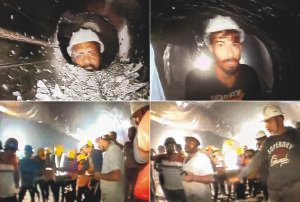The human mind is a strong yet fragile thing that can withstand incredible hardships but can also experience severe distress when things go wrong. Complex factors might lead to mental anguish throughout extended periods of incarceration.
The body’s stress reaction might be triggered by a sense of helplessness brought on by physical immobility and space restriction. Furthermore, the lack of food and water exacerbates this stress since it compromises necessities for survival. When the mind is presented with these obstacles, a series of psychological reactions take place.

Potential threats can cause individuals with Acute Stress Disorder or PTSD to become hypervigilant, constantly scanning their surroundings, but Dr. Shaunak Ajinkya suggests workarounds to manage this condition.
Types of mental anguish during incarceration
The nervous system goes into fight-or-flight mode when it feels overwhelmed by uncertainty and lack of control, which can result in increased anxiety, continuous concern, restlessness, panic attacks, and thoughts of approaching doom. Increased irritability, including being quickly upset, angry, and short-tempered, can be a sign of the stress of confinement. People may also find it difficult to control their emotions.

Sleep disruptions are widespread and might include nightmares triggered by stressful events, difficulties falling asleep, or numerous awakenings during the night.
Individuals with Acute Stress Disorder or Post-traumatic Stress Disorder (PTSD) may exhibit hypervigilance, constantly scanning their surroundings for potential threats. This heightened alertness is a result of the dangerous experience. Distressing memories may resurface unexpectedly, leading to avoidance behavior or social withdrawal. Emotional numbness may also be experienced, as individuals detach from emotions and struggle to experience pleasurable occurrences. These symptoms can be triggered by flashbacks, intrusive thoughts, avoidance behavior, and social withdrawal.
Nearly reaching the 41 workmen stranded in a tunnel in the Indian state of Uttarakhand are rescuers digging to release them.
Workers were building a tunnel when a part caved in due to a landslide on 12 November. Officials are confident that the trapped men could be rescued by Thursday afternoon. They were supplying them with provisions such as oxygen, dry food, and water through a pipeline. Officials have been providing regular updates and indicating good progress, but family and friends of the workers are increasingly anxious and angry about the delay in their rescue. An endoscopic camera captured footage of workers in a tunnel, providing relief to anxious relatives who had crowded around.

Officials assured them they would be rescued soon after identifying themselves in front of the camera.
Installing a steel pipe allows rescuers to access supplies within the tunnel.
On November 21, rescuers built a six-inch-wide steel conduit to supply the stranded workers with food, water, and other necessities. Workers are served rotis, flatbread, lentils, and other food through the pipe. After the pipe was built, footage of the workers was also made public. As medical professionals keep an eye on the confined people’s bodily and mental well-being, a second conduit is supplying oxygen.

The safety of the stranded workers is a concern for their relatives. Since the accident, Jyotish Basumatary has had at least four conversations with his captive brother. “They lined up one by one as we shouted out their names; they were visible to us on the camera.
To get to the personnel inside, rescuers attempt to drill
The intention was to use a powerful drill to cut through 60 meters of landslide material, but on November 24, preparations were shelved due to damage to the gear that was supposed to create a hole large enough for the stranded personnel to get through. Workers trapped in a construction tunnel were initially hoped to be rescued using a drill, but the drill broke after hitting an obstacle. With only 10-15 meters left to drill, rescuers had to remove the damaged machine, causing time loss.

Two rescue plans are currently underway: one involves over a dozen rescuers using hand drilling tools to expand horizontal drilling, while another involves drilling vertically from the top of the hill to reach trapped workers. Authorities have not provided an official deadline for rescue operations, but some believe workers will be back with their families by Christmas.











